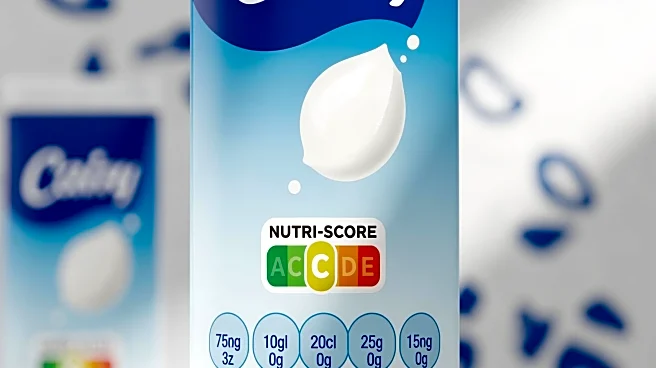What's Happening?
Danone, a major player in the dairy industry, is in a dispute with Nutri-Score, a nutrition labeling scheme, over the classification of its drinkable dairy and plant-based products. Nutri-Score has reclassified these products as beverages, which affects
their nutritional ratings, particularly due to sugar content. This reclassification means that products with high sugar content are rated lower, potentially misleading consumers about their health benefits. Danone argues that this change misrepresents the nutritional and functional qualities of its products, as it gives similar products different Nutri-Scores based solely on their format. The disagreement has led Danone to remove Nutri-Score labels from its products, despite previously supporting the scheme.
Why It's Important?
This conflict highlights the challenges in creating standardized nutritional labeling systems that accurately reflect the health benefits of products. For consumers, the reclassification could lead to confusion, as products they perceive as healthy may receive lower scores due to sugar content. For Danone, the stakes are high as the Nutri-Score ratings could impact consumer perception and sales. The broader food industry is also watching closely, as other major brands like Nestlé have similarly pulled back from using Nutri-Score. The outcome of this dispute could influence future labeling practices and regulatory decisions in the EU and potentially beyond.
What's Next?
As Nutri-Score faces declining support from major brands and potential regulatory challenges in the EU, it may need to reconsider its approach to regain trust and adoption. Danone, while advocating for transparency and a harmonized nutritional information system, is unlikely to return to Nutri-Score unless changes are made. The ongoing debate may prompt further discussions among stakeholders about the best ways to provide clear and accurate nutritional information to consumers.
Beyond the Headlines
The dispute raises questions about the role of added sugars in health and how they should be communicated to consumers. It also touches on the ethical responsibility of companies to provide transparent information and the potential for labeling systems to create 'health halos' that may mislead consumers. The resolution of this issue could set precedents for how nutritional information is standardized and communicated in the future.













